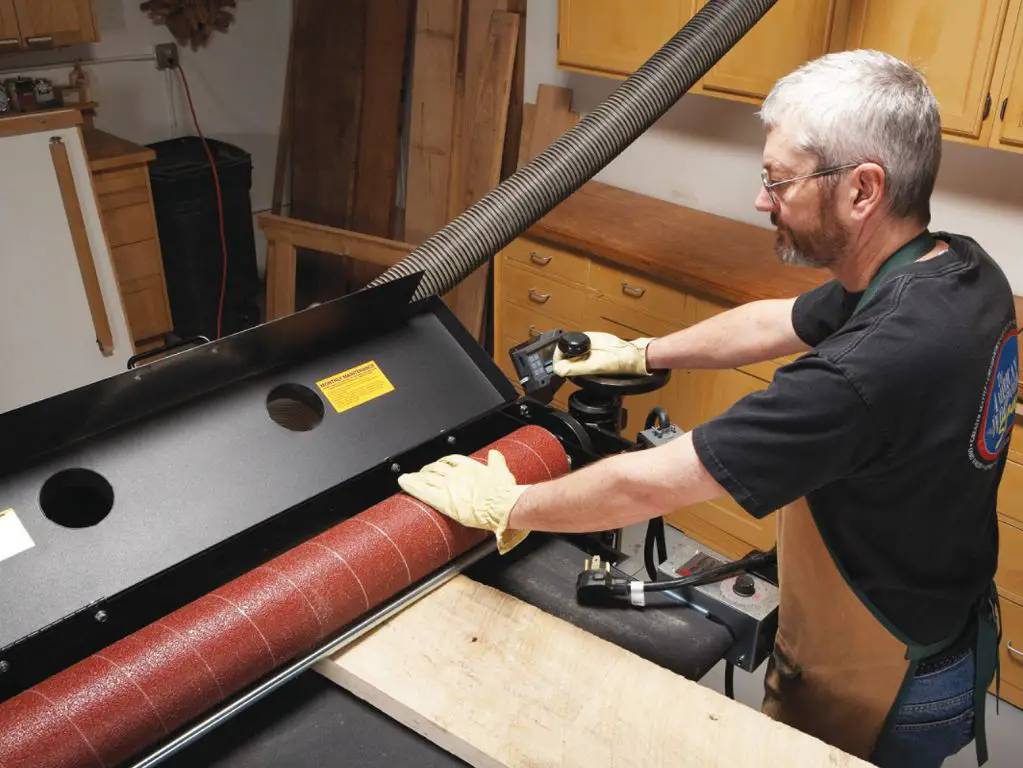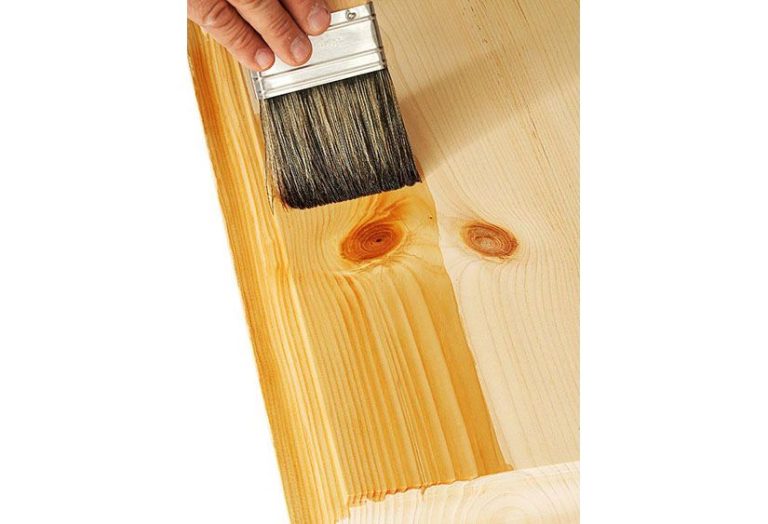What Is The Best Tool For Heavy Sanding?
Heavy sanding refers to sanding tasks that require removing significant amounts of material or smoothing large surface areas. This includes sanding wood to remove old finishes or surface defects, leveling uneven surfaces, shaping wood blanks, and preparing surfaces for finishing.
Having the right sander for heavy sanding jobs can make the work much easier and achieve better results. The wrong sander can be ineffective at removing material, create uneven surfaces, or leave unsightly swirl marks. Selecting a sander suited to the task and workpiece can improve efficiency, quality, and safety.
This article will overview the types of sanders best suited for heavy sanding and discuss the factors to consider when choosing the right sander for different sanding needs. With the proper knowledge, woodworkers can select the ideal heavy sanding tool for their workshop and projects.
Belt Sanders
Belt sanders utilize a continuous loop belt of sandpaper that moves at high speeds to rapidly remove material and smooth wood surfaces. They are designed for aggressive stock removal and heavy sanding jobs like removing paint or varnish, smoothing rough edges, and leveling surfaces. Stationary belt sanders have a fixed position motor while the more common handheld versions are portable.
Belt sanders are a top choice for heavy sanding because of their speed and power. The aggressive sanding action of the belt makes quick work of material removal. Wide belts 3-4 inches can cover more surface area for high efficiency. Many handheld models operate at 8,000-9,000 SFPM while stationary sanders reach over 10,000 SFPM. This makes them ideal for major smoothing or leveling needs.
For heavy sanding, stationary belt sanders offer the most power and stability with features like dust collection and adjustable tables. However, handheld varieties provide more versatility for sanding edges or uneven surfaces. Downsides are that belt sanders are difficult to control precisely and can leave deep scratches if overused. Proper technique and incrementally stepping down grits is important.
Overall, belt sanders deliver the speed, power and large sanding surface needed for the most demanding heavy sanding jobs. They make quick work of material removal but must be used with care. For professional-grade heavy sanding on large flat surfaces, stationary belt sanders are best. Handheld belt sanders provide more flexibility.
Sources:
https://www.electronicshub.org/belt-sander-vs-orbital-sander/
https://benchmarkabrasives.com/blogs/sanding/when-to-use-belt-sander-vs-orbital-sander
Orbital Sanders
Orbital sanders use a circular sanding motion to smooth and finish surfaces. They utilize a round or octagonal sanding pad that spins in tight circles while also rotating around the larger orbital path. This combination of circular and orbital motions results in a swirl effect that evenly and smoothly sands a surface without leaving behind deep scratches or gouges.
Orbital sanders are generally recommended over belt sanders for fine finishing work and heavy stock removal. The oscillating orbital motion is less aggressive than a belt sander, allowing more control and avoiding uneven sanding. Orbital sanders excel at removing previous finishes or flattening curved and contoured surfaces that are difficult to handle with a stationary belt. The rounded sanding pad also adapts well to irregular shapes and profiles.
For heavy sanding needs, a random orbital sander is the top choice. The random orbit functionality adds a third movement that eliminates the swirl marks sometimes left behind by standard orbital models. Random orbital sanders are able to rapidly remove material while leaving a smooth surface. Top recommendations for heavy sanding include the Bosch ROS20VSC and DeWalt DCW210D1, which feature powerful motors while maintaining versatility and control.
Random Orbital Sanders
Random orbital sanders, sometimes referred to as 5 inch random orbital sanders, use a combination of rotational and orbital sanding motions to efficiently remove material while leaving a smooth finish. The sanding disc spins and oscillates in a random pattern to avoid leaving swirl marks or uneven sanding. This random sanding action helps prevent oversanding or digging into the surface.
Random orbital sanders excel at removing material efficiently while maintaining control and avoiding aggressive scratch patterns. Their random orbits help blend the sanding pattern to prevent visible scratch marks. Compared to cheaper disc sanders, random orbitals leave a much smoother finish thanks to the oscillating motion. They also excel at sanding contours and profiles. Many models feature variable speeds, allowing the user to match the abrasion rate to the job. Hook and loop backing makes it fast and easy to change sandpaper grits.
For heavy sanding applications, random orbitals shine thanks to their ability to rapidly remove material. Their aggressive abrasion rates make quick work of stripping paints or finishes, flattening boards, or smoothing rough surfaces (source). Compared to sheet sanders, random orbitals are less prone to leaving visible scratch patterns in heavy sanding use. Many models have dust collection attachments for managing debris.
The main downsides of random orbit sanders are that they are not as effective as stationary disc sanders for perfectly flat surfaces, and they generate more friction and heat compared to finish sanders. Cheaper models may lack the power or build quality for extended heavy sanding. High end models from brands like Festool offer excellent power and dust collection but cost significantly more.
Overall, random orbital sanders offer the ideal blend of power, smooth finish, and versatility for most heavy sanding needs. Their ability to aggressively remove material while leaving a uniform scratch pattern makes them one of the best electric sanders for tasks like stripping, flattening or distressing (source). For professional heavy sanding work, high end random orbit models provide superior performance.
Oscillating Spindle Sanders
Oscillating spindle sanders utilize a narrow drum that rapidly rotates back and forth in a sweeping motion to sand contours and curved shapes. The oscillating motion allows the spindle to conform to irregular shapes and sand hard to reach areas that wider belt or disc sanders can’t easily access.
For heavy sanding applications, oscillating spindle sanders excel at removing material efficiently while still maintaining control and precision on intricate profile shapes. Their narrow drums can get into tight spots that other sanders can’t reach. The oscillation also prevents the abrasive from digging in too aggressively in any one spot, allowing for a more uniform sanding action.
According to this review on Woodsmith, the Jet Oscillating Spindle Sander is a top recommendation for heavy sanding uses. It has a powerful 3/4 HP motor with variable speed control up to 3,600 RPM, and comes with coarse grit sleeves down to 60 grit, making fast stock removal possible.
The oscillating mechanism prevents deep grooves or gouges even when using heavy pressure. This makes oscillating spindle sanders a versatile option for both rapid material removal as well as fine shaping and contouring.
Disc Sanders
Disc sanders are a popular stationary tool for heavy sanding tasks like removing stock, reshaping, and smoothing wood and metal workpieces. They consist of a round abrasive disc that spins at high speeds to rapidly sand and shape material. Disc sanders come in a range of sizes from 6″ to 12″ discs, with 12″ models providing the most sanding power and surface area for heavy duty sanding.
The Rikon 12″ Disc Sander is a top choice for heavy sanding applications. It has a powerful 1/2 HP motor and runs at 3450 RPM, allowing fast stock removal. The large 12″ disc provides 13″ of sanding width, making it easy to flatten, smooth, and shape large workpieces. This sander also tilts up to 45 degrees for angled sanding. Popular Woodworking calls this “the best overall” 12″ disc sander.
Another good 12″ disc sander for heavy sanding is the Powermatic 12″ Disc Sander. It features a 1/2 HP motor, tilts to 45 degrees, and has a 15″ x 11″ cast iron table to support big workpieces. The Powermatic also comes with a dust collection port to help control messes from heavy sanding.
When choosing a disc sander for heavy sanding tasks, look for a model with at least a 1/2 HP motor, a 12″ disc, a large cast iron table, and the ability to tilt the disc. Also consider dust collection, warranty, and overall durability of the build. Comparing features between models will help select the right disc sander for heavy duty sanding needs.
Drum Sanders
Drum sanders feature a cylindrical drum covered with sandpaper rotating at a high speed. The wood piece is fed into the machine, making contact with the rotating drum which abrades and flattens the wood surface. The operator controls the depth of cut and feed rate. Drum sanders are good for rapid material removal and leveling uneven surfaces. They excel at heavy stock removal compared to other sanders.

Some pros of drum sanders for heavy sanding are:
- Rapid removal of material – Drum sanders can remove a lot of material quickly (“Drum Sander Heavy Sanding Pros Cons Reddit.” Accessed DATE. URL). This makes them ideal for major surface leveling.
- Consistent finish – The rotating cylindrical drum produces an even, consistent abrading across the full width of the workpiece.
- Dust collection – Most drum sanders have built-in dust collection to manage the large amount of dust produced.
Some cons of drum sanders are:
- Less precision than other sanders – Contouring and detail sanding is more difficult compared to random orbital or oscillating spindle sanders.
- Potential for oversanding – It can be easy to remove too much material if feed rate and depth of cut aren’t controlled properly.
- Large footprint – Drum sanders take up significant floor space in a workshop (“Drum Sander Heavy Sanding Pros Cons For Woodworking.” Accessed DATE. URL).
Overall, drum sanders excel at rapid removal of stock and material leveling. Their high efficiency makes them a top choice for heavy sanding needs.
Sanding Blocks
Sanding blocks are handheld tools that allow sandpaper to be affixed to a rigid surface for more control and comfort when sanding. Sanding blocks are manually operated, making them well-suited for smaller jobs that require detail work and precision. They come in a variety of shapes and sizes for sanding flat surfaces, contoured edges, or confined spaces.
For heavy sanding applications, larger sanding blocks made of durable materials like hardwood or rubber are recommended. Larger sanding surface areas distribute friction for more efficient stock removal. According to Woodsmith, some top choices for heavy sanding blocks are the Auerllcy Sanding Block made of hardwood, the Sackorange Rubber Sanding Block, and the 3M Rubber Sanding Block.
Sanding blocks excel at smoothing and finishing tasks on materials like wood, fiberglass, and metal. Their rigid construction prevents inadvertent gouging while allowing the user to apply consistent pressure. For metal sanding, sanding blocks with contoured profiles are ideal for getting into crevices and sanding rounded edges. Automotive experts suggest the Kutzall Extreme Sanding Block and the 3M Contour Sanding Block for nasty metal sanding jobs.
Choosing the Right Sander
When choosing the right sander for heavy sanding projects, there are several key factors to consider:
- Sanding Disc Size – Larger sanding discs or belts (5-6 inches) are best for covering large, flat surfaces efficiently in heavy sanding. Smaller discs (3-4 inches) are better for tight spaces.
- Motor Power – Look for a sander with a high amp motor (6-10 amps) to handle constant heavy sanding without overheating. Belt sanders tend to have the most power.
- Variable Speed – Adjustable speed allows you to fine tune the sander’s abrasion rate for different materials and needs.
- Dust Collection – Built-in dust collection helps contain the large amounts of dust created during heavy sanding.
- Handheld vs. Benchtop – Handheld sanders allow the most portability and flexibility. Benchtop models provide stability and are ideal for endurance sanding.
For heavy stock removal on large surfaces, a belt sander is often the best choice due to its aggressive cutting power (source). For smoothing and finishing heavily sanded surfaces, a random orbital sander with high disc rotation speed will leave the least swirl marks. Oscillating spindle sanders efficiently smooth inside curves (source). Be sure to select the appropriate grit sandpaper for each sanding task.
Conclusion
When it comes to heavy sanding, the most important factors to consider are the sanding surface area, amount of power, and ability to remove material quickly. For large, flat surfaces, belt sanders are the best choice. Their continuous belts cover a wide area and can rapidly smooth wood. For confined spaces like corners, orbital and random orbital sanders excel due to their compact size and aggressive sanding motion.
For contoured surfaces, oscillating spindle sanders conform to curves and irregular shapes. Disc sanders and drum sanders also adapt well to rounded edges and molded details. While sanding blocks require more manual effort, their firm bases prevent gouging on distressed or detailed surfaces.
In summary, identifying the characteristics of the surface and type of material removal needed will determine the ideal heavy sanding tool. With the right sander for the job, you can work quickly and efficiently while achieving quality results.



